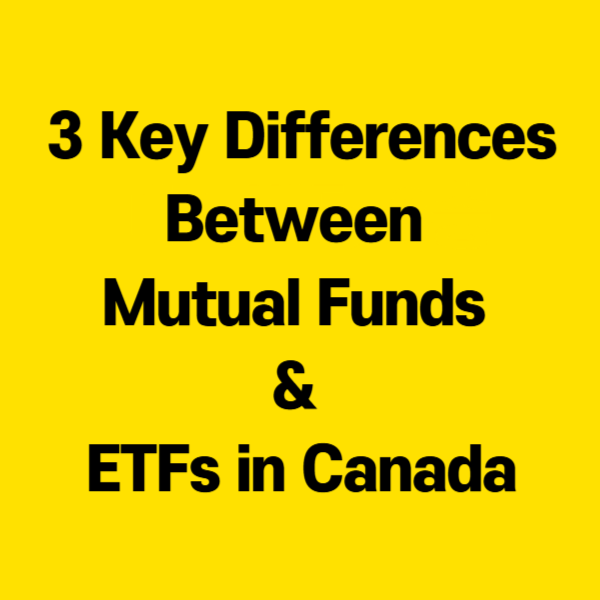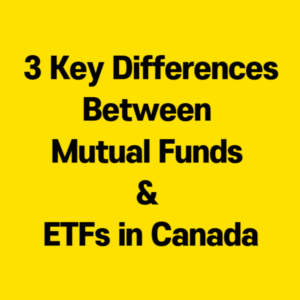3 Key Differences Between Mutual Funds & ETFs in Canada. Are you feeling overwhelmed by the number of investment options available in Canada? It’s a common problem for new and seasoned investors alike. You want to grow your wealth, but the jargon and complexities of the financial world can make it difficult to know where to start.
Many people feel intimidated by the idea of picking individual stocks, leading them to miss out on the potential for long-term growth. This is where **Mutual Funds & ETFs, Canada** come in. These two popular investment vehicles offer a simpler way to diversify your portfolio, but they have crucial differences.
Understanding what sets them apart is the key to making an informed decision and building a portfolio that aligns with your financial goals. Let’s break down the essential differences between these two investment types so you can invest with confidence.
Understanding Mutual Funds & ETFs in Canada
A mutual fund is a professionally managed pool of money from many investors, used to buy a variety of securities like stocks and bonds. When you buy into a mutual fund, you’re buying units of that fund, and a fund manager makes all the buying and selling decisions for you.
Mutual funds are bought and sold directly from the fund company or a financial institution at the end of each trading day at a price determined by the fund’s Net Asset Value (NAV). They are a hands-off approach to investing, offering instant diversification. This makes them a popular choice for investors who prefer professional guidance and don’t want to actively manage their own portfolio.
On the other hand, an ETF, or Exchange-Traded Fund, is also a basket of securities, but it’s traded on a stock exchange just like an individual stock. ETFs are bought and sold throughout the trading day at their current market price. Most ETFs are “passively managed,” meaning they track a specific market index like the S&P/TSX Composite Index. Their hands-off management style typically results in lower fees compared to actively managed mutual funds.
Both of these investment options are great for diversifying your portfolio, but their structure and trading methods are key points to consider when you compare **Mutual Funds & ETFs in Canada**.
Management Style and Cost
The primary difference between a mutual fund and an ETF lies in their management style and associated costs. Mutual funds are almost always actively managed by a fund manager, who works to outperform the market. For this service, investors pay a Management Expense Ratio (MER), which can be significantly higher than an ETF’s MER. ETFs, by contrast, are generally passively managed.
They are designed to simply replicate the performance of a market index, which requires less human intervention. This difference in management approach results in much lower fees for ETFs, making them a very cost-effective way to invest.
Trading and Pricing Differences
Another key distinction between **Mutual Funds & ETFs in Canada** is how they are traded and priced. Mutual fund transactions are processed once a day at the closing price, which is calculated based on the fund’s NAV. This means you can’t buy or sell them instantly.
ETFs, on the other hand, can be bought and sold throughout the trading day at their current market price, just like stocks. This intraday trading flexibility allows you to react quickly to market movements if you choose. However, trading ETFs can also incur brokerage commissions, which could add up if you trade frequently. Mutual funds typically don’t have commissions, but they may have other fees, like front-end or back-end loads, depending on the fund.
Choosing the Right Investment for You
So, which is the better choice for you? It depends on your investment style and goals. If you prefer a hands-off approach, are comfortable with paying a bit more for professional management, and like the simplicity of a one-a-day transaction, a mutual fund may be a great fit.
If you are a more active investor, are looking for lower fees, and want the flexibility to trade throughout the day, an ETF could be the perfect solution. Many investors use a combination of both to create a well-diversified portfolio. When it comes to investing, there is no one-size-fits-all answer.
Both of these investment vehicles are powerful tools for growing your wealth, and knowing their key differences is the first step toward building a successful financial future. By understanding the core features of **Mutual Funds & ETFs in Canada**, you can take control of your investment journey and make confident, informed decisions.
Popular Blog Posts
4 Key Reasons Why a Guaranteed Investment Certificate (GIC) is a Smart Choice
7 Key Benefits of a Registered Retirement Savings Plan (RRSP) You Can’t Ignore
5 Key Facts About the Tax-Free Savings Account (TFSA) You Need to Know

